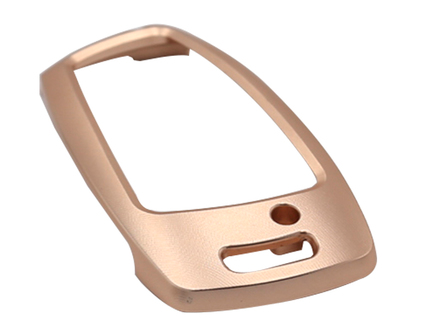The machining deformation of aluminum alloy shells, especially thin-walled shells, is a common technical problem. Therefore, our machining plant must analyze the causes of deformation and take corresponding measures to prevent it.

What Causes The Deformation Of CNC Aluminum Alloy Shell & How To Fix
1. The material grade and structural complexity of the aluminum shell will affect the deformation of the shell
The deformation of aluminum shell machined by CNC is related to the complexity of the shape, aspect ratio and wall thickness, and is directly related to the rigidity and stability of the material. Therefore, when designing the aluminum shell of the product, the influence of these factors on the deformation of the workpiece should be minimized. In particular, the structure should be reasonable in the processing and customization of large part shells. Before processing, the hardness and porosity of aluminum alloy blanks shall be strictly controlled to ensure the quality of blanks and reduce the deformation of workpieces caused thereby.
2. Deformation of aluminum shell caused by machining and clamping of machining center
When aluminum shell processing and material blank clamping, the correct clamping surface shall be selected first, and then the appropriate clamping force shall be selected according to the position of the clamping surface. Therefore, the clamping surface and the force bearing surface should be as consistent as possible so that the clamping force acts on the workpiece.
When clamping forces in multiple directions act on the workpiece, the sequence of clamping forces shall be considered. The clamping force shall be applied first to make the workpiece contact with the support, which is not easy to be too large. The clamping force, which is mainly used to balance the cutting force, should be used in subsequent processes.
3. Deformation caused by processing parameters of aluminum shell
During the cutting process of the machining center machine tool, the shell is affected by the cutting force, resulting in elastic deformation corresponding to the direction of the force, which is often referred to as the machining industry. In terms of processing parameters and tool selection, corresponding measures should be taken to deal with this deformation.
– Sharp tools are required for finishing. On the one hand, it can reduce the resistance formed by the friction between the tool and the workpiece, and on the other hand, it can improve the heat dissipation effect when the tool is cutting the workpiece. So as to reduce the residual internal stress on the workpiece.
– When milling the large surface of thin-walled casing parts, the single edge milling method is usually used. The cutter parameters adopt larger principal deflection angle and larger rake angle to reduce cutting resistance. The tool is widely used in production because of its light cutting, fast running and reduced deformation of thin-walled parts.
– In the custom machining process of thin-walled aluminum shell, a reasonable tool angle is crucial to the size of cutting force, the thermal deformation generated in the machining process and the micro quality of the workpiece surface. The size of the rake angle of the tool determines the cutting deformation of the tool and the sharpness of the rake angle. Large rake angle reduces cutting deformation and friction. However, if the rake angle is too large, the tool wedge angle will be reduced, the tool strength will be weakened, the tool heat dissipation will be poor, and the wear will be accelerated. Therefore, when machining aluminum alloy thin-walled cavities, high-speed tools and cemented carbide tools are generally used. The correct selection of cutting tools is the key to deal with the deformation of aluminum shell workpiece.
– In machining, the heat generated by the friction between the CNC machine tool and the workpiece will also deform the workpiece, so high-speed cutting is often used. In high speed machining, because the chip removal time is relatively short, most of the cutting heat is taken away by the chip, reducing the thermal deformation of the workpiece; Secondly, when working in the high-speed machining center, the reduction of the softening part of the cutting layer material can also reduce the deformation of aluminum shell processing, which is conducive to ensuring that the shell has accurate size, shape and size.
In addition, the cutting fluid of CNC machine tool machining center is mainly used to reduce friction and cutting temperature during the cutting process. Reasonable selection of cutting fluid plays an indispensable role in improving tool durability, surface quality and machining accuracy. Therefore, in order to prevent the deformation of parts in the process of machining, it is necessary to reasonably use special cutting fluid with appropriate concentration.
– In CNC machining, the use of reasonable cutting process is an important link to ensure the accuracy of parts. When machining thin-walled aluminum shells with high precision requirements, generally symmetrical machining is used to balance the stress generated on the opposite side to achieve a relatively stable state, and the machined workpiece will be as flat as possible. However, when a lot of cutting is used in a certain process, the workpiece will be deformed due to the imbalance of tensile stress and compressive stress. The deformation of thin-walled aluminum shell in machining center is various. Some factors such as the clamping force when clamping the workpiece, the cutting force when cutting the workpiece
4. Deformation of aluminum shell in natural state after off machine of machining center
After the aluminum shell is processed, the processing part itself has internal stress and deformation. To solve this problem, some workpieces need to be divided into rough machining and finish machining, that is, after the rough machining is completed, aging treatment or heat treatment is carried out to remove the stress, and then finish machining is carried out.